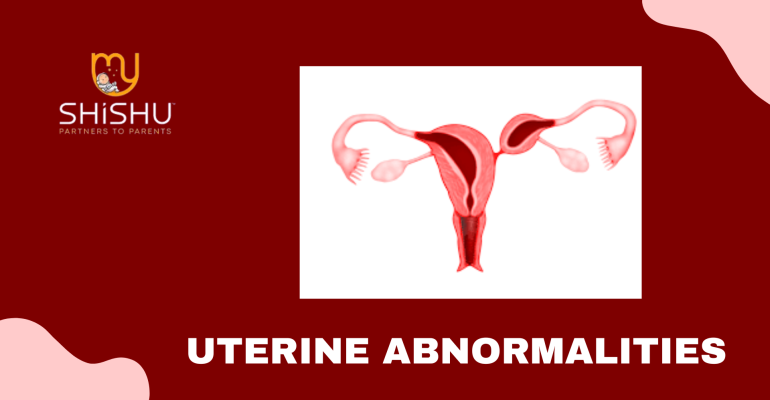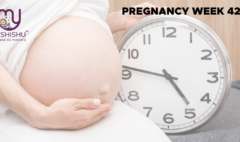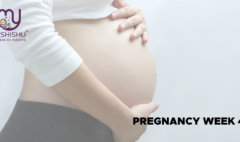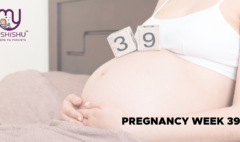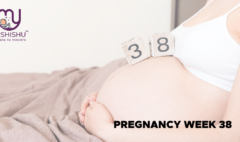Uterine Abnormalities in Pregnancy: Conquering the Fear with Courage
Uterine Abnormalities in Pregnancy: Conquering the Fear with Courage
Introduction
In the realm of women’s health, the fear of uterine abnormalities in pregnancy is a topic often shrouded in uncertainty and anxiety. For many women, the thought of having a uterine abnormality can evoke feelings of fear, confusion, and apprehension about their reproductive health. These concerns are entirely valid, given the potential implications that uterine abnormalities may have on fertility, pregnancy, and overall well-being. However, it’s essential to shed light on this topic, dispel misconceptions, and provide support and guidance to those navigating this journey.
Uterine abnormalities in pregnancy encompass a range of conditions that affect the structure, shape, or function of the uterus. From uterine fibroids and polyps to congenital anomalies like septate or bicornuate uterus, these conditions can vary in severity and impact. Understanding the causes, symptoms, and treatment options for uterine abnormalities is crucial for empowering women to advocate for their health and make informed decisions about their care. In this blog, we’ll delve into the complexities of uterine abnormalities in pregnancy, explore common fears and concerns, and offer insights and resources to support individuals on their journey towards greater reproductive health and well-being.
Types of Uterine Abnormalities in Pregnancy
Uterine abnormalities in pregnancy encompass a diverse range of conditions that affect the structure, shape, or function of the uterus. Understanding the various types of uterine abnormalities in pregnancy is essential for individuals to recognize potential issues, seek appropriate medical care, and make informed decisions about their reproductive health. Here, we’ll delve into some common types of uterine abnormalities:
Uterine Fibroids:
- Uterine fibroids are noncancerous growths that develop in the muscular wall of the uterus. They can vary in size, number, and location within the uterus.
- Symptoms of uterine fibroids may include heavy menstrual bleeding, pelvic pain or pressure, frequent urination, and reproductive issues such as infertility or recurrent miscarriages.
- Treatment options for uterine abnormalities may include medication, minimally invasive procedures to remove or shrink the fibroids, or surgical interventions such as hysterectomy.
Uterine Polyps:
- Uterine polyps are growths that develop on the inner lining of the uterus (endometrium). They may vary in size and can be single or multiple.
- Symptoms of uterine polyps may include irregular menstrual bleeding, spotting between periods, infertility, or recurrent miscarriages.
- Treatment for uterine polyps may involve minimally invasive procedures to remove the polyps, hormonal medications, or surgical removal if necessary.
Uterine Septum:
- A uterine septum is a congenital abnormality characterized by a partition or wall within the uterus, dividing it partially or completely into two separate cavities.
- Uterine septum can increase the risk of pregnancy complications such as miscarriage, preterm birth, or breech presentation.
- Treatment for a uterine septum may involve hysteroscopic surgery to remove or resect the septum, which can improve reproductive outcomes for individuals planning pregnancy.
Bicornuate Uterus:
- A bicornuate uterus is a congenital anomaly characterized by a uterus with two separate horn-like structures, giving it a heart-shaped appearance.
- Individuals with a bicornuate uterus may experience challenges with fertility, recurrent miscarriages, or preterm birth due to the unique shape of the uterus.
- Management of a bicornuate uterus may involve monitoring for potential complications during pregnancy and delivery, as well as interventions to address specific reproductive issues.
Unicornuate Uterus:
- A unicornuate uterus is a congenital anomaly characterized by the presence of only one half of the uterus, typically with a single fallopian tube.
- Individuals with a unicornuate uterus may have an increased risk of pregnancy complications such as miscarriage, preterm birth, or breech presentation.
- Management of a unicornuate uterus may involve close monitoring during pregnancy, early detection of potential complications, and specialized obstetric care.
These are just a few examples of uterine abnormalities in pregnancy, and it’s essential to consult with a healthcare provider for proper diagnosis, evaluation, and management tailored to individual needs. Early detection and appropriate treatment can help individuals optimize their reproductive health and achieve their family planning goals.
Causes of Uterine Abnormalities
Uterine Fibroids:
- Hormonal Factors: Changes in hormone levels, particularly estrogen and progesterone, are believed to contribute to the development and growth of uterine fibroids.
- Genetic Predisposition: Family history and genetic factors may play a role in the development of uterine fibroids, with certain individuals being more susceptible to fibroid formation.
- Age and Ethnicity: Uterine fibroids are more prevalent in individuals of reproductive age, particularly those in their 30s and 40s. Additionally, African American individuals tend to have a higher risk of developing fibroids compared to other ethnic groups.
Uterine Polyps:
- Hormonal Imbalance: Fluctuations in hormone levels, particularly estrogen, can stimulate the growth of uterine polyps.
- Chronic Inflammation: Conditions associated with chronic inflammation of the endometrium, such as endometrial hyperplasia or chronic endometritis, may increase the risk of developing uterine polyps.
- – Age and Hormonal Changes: Uterine polyps are more commonly observed in individuals approaching menopause, as hormonal changes during this period can contribute to the development of polyps.
Uterine Septum:
- Developmental Abnormalities: A uterine septum is typically a congenital anomaly that arises during fetal development when the uterus fails to fully form, or the septum fails to regress appropriately.
- Genetic Factors: Certain genetic mutations or chromosomal abnormalities may predispose individuals to the development of a uterine septum.
- Environmental Influences: Exposure to certain environmental factors or teratogenic agents during fetal development may increase the risk of uterine septum formation.
Bicornuate Uterus:
- Developmental Defects: A bicornuate uterus is primarily a result of incomplete fusion of the müllerian ducts during fetal development, leading to the characteristic heart-shaped appearance of the uterus.
- Genetic Factors: Genetic mutations or variations in developmental genes involved in uterine formation may contribute to the development of a bicornuate uterus.
- Environmental Influences: Maternal exposure to environmental factors or teratogenic agents during pregnancy may influence fetal development and increase the risk of uterine abnormalities in pregnancy.
Unicornuate Uterus:
- Developmental Anomalies: A unicornuate uterus typically results from incomplete development or absence of one müllerian duct during fetal development, leading to the formation of a single horn-shaped uterus.
- Genetic Factors: Genetic mutations or alterations in developmental genes may disrupt the normal development of the uterus, resulting in a unicornuate uterus.
- Maternal Factors: Maternal health conditions or exposures during pregnancy, such as maternal diabetes or exposure to certain medications, may impact fetal development and increase the risk of uterine abnormalities in pregnancy.
Psychological Effects
1. Anxiety and Fear:
- Diagnosis Anxiety: Learning about a uterine abnormality in pregnancy diagnosis can evoke feelings of anxiety, fear, and uncertainty about future reproductive health and fertility.
- Pregnancy Anxiety: Individuals with uterine abnormalities in pregnancy may experience heightened anxiety and fear regarding pregnancy complications, such as miscarriage, preterm birth, or pregnancy loss, due to the potential impact of their condition on reproductive outcomes.
- Future Fertility Concerns: Concerns about the ability to conceive and carry a pregnancy to term may contribute to anxiety and distress among individuals with uterine abnormalities in pregnancy, particularly those planning to start a family or expand their family in the future.
2. Depression and Stress:
- Emotional Distress: Coping with the diagnosis of uterine abnormalities in pregnancy and the associated challenges, such as fertility concerns or pregnancy complications, can lead to feelings of sadness, depression, and emotional distress.
- Stress Management: Managing the stress of living with uterine abnormalities during pregnancy, undergoing medical treatments or procedures, and navigating the uncertainty of future reproductive outcomes can be overwhelming and may impact overall emotional well-being.
3. Body Image and Self-Esteem:
- Altered Body Image: Uterine abnormalities in pregnancy may affect body image perceptions and self-esteem, particularly if the condition is associated with visible physical changes or impacts reproductive health and fertility.
- Identity Concerns: Individuals may struggle with feelings of inadequacy, shame, or embarrassment related to their uterine abnormalities in pregnancy, leading to challenges in accepting and embracing their bodies and identities.
4. Relationship Dynamics:
- Intimate Relationships: Uterine abnormalities can influence intimate relationships and sexual well-being, as individuals may experience concerns about fertility, pregnancy complications, or physical discomfort during sexual activity.
- Partner Support: Supportive and understanding partners can play a crucial role in helping individuals cope with the psychological effects of uterine abnormalities, providing emotional support, reassurance, and encouragement throughout the journey.
5. Coping Strategies:
- Seeking Support: Connecting with healthcare providers, support groups, or mental health professionals specializing in reproductive health can provide individuals with uterine abnormalities with valuable support, guidance, and coping strategies.
- Self-Care Practices: Engaging in self-care activities, such as mindfulness, relaxation techniques, exercise, or creative expression, can help individuals manage stress, reduce anxiety, and improve overall well-being.
- Communication: Open and honest communication with partners, family members, and friends about feelings, concerns, and needs related to uterine abnormalities can foster understanding, empathy, and support within personal relationships.
These psychological effects highlight the importance of addressing the emotional and mental well-being of individuals with uterine abnormalities and providing comprehensive support and resources to help them navigate the challenges and uncertainties associated with their condition.

Coping Strategies and Support
- Psychoeducation: Understanding the nature of uterine abnormalities, potential treatment options, and associated reproductive outcomes can empower individuals to make informed decisions about their health and well-being. Psychoeducation sessions with healthcare providers or support groups can provide valuable information and resources to help individuals navigate their condition.
- Emotional Support: Seeking emotional support from loved ones, friends, or support groups can provide individuals with uterine abnormalities with a safe space to express their feelings, fears, and concerns. Sharing experiences and connecting with others who have similar challenges can reduce feelings of isolation and provide a sense of community and understanding.
- Professional Counseling: Individual or couples counseling with mental health professionals specializing in reproductive health or trauma-informed care can offer personalized support and guidance in managing the emotional impact of uterine abnormalities. Counseling sessions may focus on coping strategies, stress management techniques, and exploring feelings related to fertility, pregnancy, and body image.
- Mindfulness and Relaxation Techniques: Practicing mindfulness-based techniques, such as meditation, deep breathing exercises, or progressive muscle relaxation, can help individuals manage stress, anxiety, and emotional distress associated with uterine abnormalities. These techniques promote relaxation, self-awareness, and present-moment focus, fostering a sense of calm and emotional balance.
- Supportive Relationships: Cultivating supportive relationships with partners, family members, or friends who are understanding, empathetic, and nonjudgmental can provide invaluable emotional support and validation. Having a strong support network can help individuals feel less alone in their journey and provide a sense of reassurance and comfort during challenging times.
- Self-Care Practices: Engaging in self-care activities that promote physical, emotional, and mental well-being, such as regular exercise, healthy eating, adequate sleep, and creative expression, can help individuals manage stress and enhance overall quality of life. Prioritizing self-care allows individuals to nurture themselves and replenish their energy reserves, fostering resilience and coping ability.
- Advocacy and Empowerment: Advocating for one’s needs, rights, and preferences in healthcare settings can empower individuals with uterine abnormalities to take an active role in their treatment decisions and reproductive health journey. Being informed, assertive, and proactive in advocating for comprehensive care and support can contribute to improved outcomes and a sense of empowerment.
By incorporating these coping strategies and accessing supportive resources, individuals with uterine abnormalities can navigate the psychological challenges of their condition with resilience, strength, and self-compassion.
Diagnosis & Treatment Options for Uterine Abnormalities
- Transvaginal Ultrasound: This imaging technique uses high-frequency sound waves to create detailed images of the uterus and surrounding structures. Transvaginal ultrasound is often the first-line diagnostic tool for evaluating uterine abnormalities due to its accessibility, safety, and effectiveness.
- Hysterosalpingography (HSG): HSG is a radiographic procedure that involves injecting a contrast dye into the uterus through the cervix while taking X-ray images. This test helps visualize the shape and structure of the uterine cavity and fallopian tubes, allowing healthcare providers to identify abnormalities such as uterine fibroids, polyps, or congenital anomalies.
- Hysteroscopy: This minimally invasive procedure involves inserting a thin, lighted instrument called a hysteroscope through the cervix into the uterus. Hysteroscopy allows direct visualization of the uterine cavity, enabling healthcare providers to detect and diagnose abnormalities such as adhesions, septa, or abnormal tissue growth.
- Magnetic Resonance Imaging (MRI): MRI uses powerful magnets and radio waves to generate detailed images of the pelvic organs, including the uterus. MRI may be recommended for further evaluation of complex uterine abnormalities or to assess the extent of disease involvement.
- Medications: Hormonal therapies, such as birth control pills, gonadotropin-releasing hormone (GnRH) agonists, or progestin-releasing intrauterine devices (IUDs), may be prescribed to manage symptoms associated with uterine abnormalities, such as heavy menstrual bleeding or pelvic pain.
- Minimally Invasive Procedures: Certain uterine abnormalities, such as fibroids or polyps, may be treated using minimally invasive procedures such as hysteroscopic resection or uterine artery embolization. These techniques involve removing or shrinking abnormal tissue growths while preserving the uterus’s integrity.
- Surgical Interventions: In cases where conservative measures are ineffective or contraindicated, surgical interventions such as myomectomy (removal of uterine fibroids), endometrial ablation (destruction of the uterine lining), or hysterectomy (removal of the uterus) may be recommended to alleviate symptoms or address underlying pathology.
- Assisted Reproductive Technologies (ART): Individuals with uterine abnormalities affecting fertility may benefit from ART procedures such as in vitro fertilization (IVF) or gestational surrogacy, which involve fertilizing eggs in a laboratory setting and transferring embryos to the uterus or a surrogate’s uterus for implantation and pregnancy.
Treatment decisions should be made in collaboration with a healthcare provider, taking into account the individual’s medical history, symptoms, reproductive goals, and overall health status. Regular follow-up care and monitoring are essential to evaluate treatment effectiveness, manage potential complications, and optimize reproductive outcomes.
Additional Common Questions
-
Can uterine abnormalities affect fertility?
Yes, certain uterine abnormalities, such as uterine fibroids, polyps, or congenital anomalies, can interfere with fertility by affecting the implantation of embryos or causing recurrent pregnancy loss. However, not all uterine abnormalities have a significant impact on fertility, and treatment options are available to address underlying issues and improve reproductive outcomes.
-
Are uterine abnormalities hereditary?
Some uterine abnormalities, such as congenital anomalies like uterine septum or bicornuate uterus, may have a genetic component and can run in families. However, the exact genetic mechanisms underlying uterine abnormalities are not fully understood, and environmental factors may also play a role in their development.
-
Can uterine abnormalities cause complications during pregnancy?
Yes, certain uterine abnormalities can increase the risk of complications during pregnancy, including miscarriage, preterm birth, fetal growth restriction, and abnormal fetal presentation (such as breech or transverse position). It’s essential for individuals with uterine abnormalities to receive comprehensive prenatal care and monitoring to minimize potential risks and optimize pregnancy outcomes.
-
Are uterine abnormalities associated with an increased risk of uterine cancer?
While some uterine abnormalities, such as endometrial polyps or hyperplasia, may slightly increase the risk of developing uterine cancer, most uterine abnormalities are benign (non-cancerous) and do not lead to cancer. However, individuals with uterine abnormalities may require regular monitoring and surveillance to detect any potential changes in the uterine lining and address them promptly.
Conclusion
In summary, while the fear of uterine abnormalities can be overwhelming, it’s crucial to seek support, stay informed, and explore treatment options. By taking proactive steps and prioritizing self-care, individuals can navigate this journey with resilience and hope, knowing that they are not alone in their struggles. Remember, knowledge is power, and with the right resources and support, it’s possible to overcome fears and move forward towards better reproductive health and well-being.


